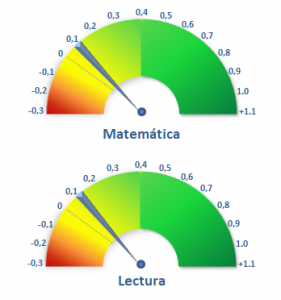Implementing institution: Society for the Advancement of Philosophical Enquiry and Reflection in Education (SAPERE)
Country: United Kingdom
Source: Education Endowment Foundation
Execution period: 1993 - in progress
Plataforma de Prácticas Efectivas:
To help students think logically, express their opinions, construct an argument, listen to and respect the opinions of their peers.
A teacher training and consultancy program aimed at the organization and moderation of reflection groups around philosophy.
Participating teachers and students indicate positive effects of the program on students' confidence, their ability to express themselves in a group and their self-esteem. They have also increased their results in mathematics (0.10 SD) and in reading (0.12 SD).
Philosophy for Children (P4C) is a teacher training and mentoring program aimed at organizing and moderating think tanks around philosophical issues such as “truth”, “justice” or “discrimination”. The intervention is the result of the collaboration of several teachers, academics and other educational professions who formed the Society for the Advancement of Philosophical Enquiry and Reflection in Education (SAPERE) in 1992. Since its inception, the organization has formed strategic alliances with schools around England to advise them on the implementation of P4C.
The intervention consists of two strategic components: the initial training of teachers in the methodology and their continuous accompaniment in classes by SAPERE professionals. These teach the basic concepts of organizing a reflection group aimed at children between 5 and 7 years of age. The organization also provides a series of pedagogical resources accessible on its website that allow to structure the discussion, provide visual examples and guide the children towards self-reflection.
The heart of the P4C methodology is the organization of sessions with a small group of students and moderated by a teacher. All participants leave by taking a seat in a circle and discovering a stimulus that will serve to raise the discussion. This stimulus can be a video, a text, an image, a poem, etc. The teacher then gives a minute’s silence necessary for individual reflection and poses a question that the students should discuss in subgroups, and then present the result of their internal reflection to the whole assembly. The assembly examines the different points of view and everyone is encouraged to defend their opinion.
In England, the enrolment of children at elementary and secondary levels covers almost the entire population of attendance age (99.85% and 98.28% respectively by 2014). Net participation rates have been growing since 2006, especially at the secondary level (+6 percentage points). However, the OECD’s International Program for Student Assessment Report, or PISA Report, has highlighted a decline in reading literacy levels among the 15-year-old English population since 2011.
In 2013, the P4C program was evaluated by a Durham University team under the auspices of the Education Endowment Foundation. The purpose of the study was to assess the effects of the P4C methodology on children’s school capacities, particularly in mathematics and reading.
A total of 3,159 grade 4 and 5 students were selected from 48 different schools. 1,550 have lived the P4C experience, while the remaining 1,609 have not. Interviews with teachers and participating students revealed positive effects of the program on students’ confidence, their ability to communicate in groups and their self-esteem. Comparison of the results of the two groups in the national tests has also shown an increase in mathematics (0.10 SD) and reading (0.12 SD). These results are even higher for disadvantaged children (+0.20 and +0.29 respectively). Only grade 5 students have improved their Cognitive Abilities Test (CAT) skills, but grade 4 ones have not. Considering a group of 240 students, the costs of the program (essentially represented by teacher training) reach £16 per student.
Impact of interventions:

Charts: Impact measured in standard deviations of the intervention group compared to the control group
Tags: